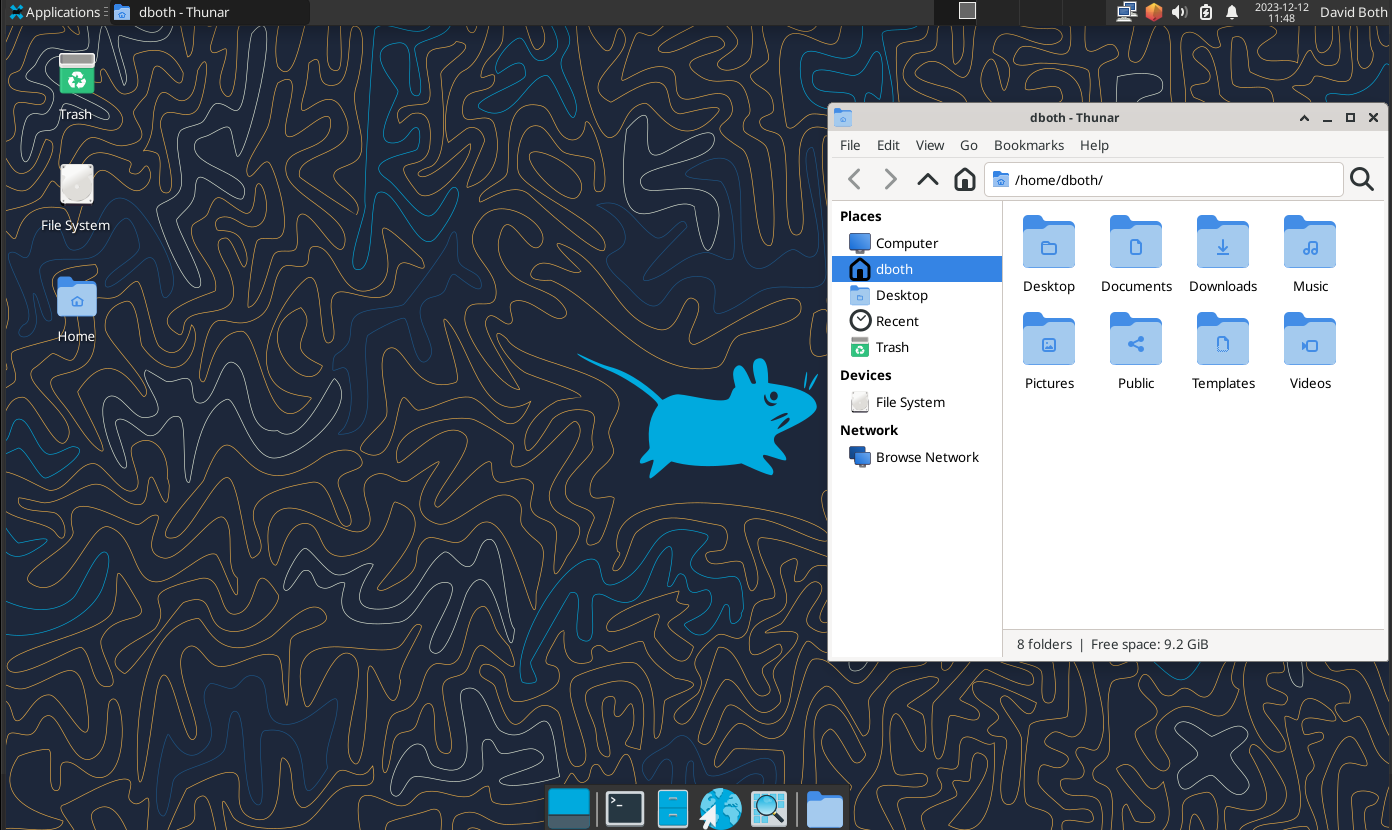
A Quick Review of Fedora 39
This review is based on my first month of using Fedora 39. I have performed no formal testing and have not tried very hard to make it fail.
The Hardware
I have twelve – yes a full dozen – computers on which I have Fedora installed and I upgraded all of them from Fedora 38 to Fedora 39 on November 10, just a few days after its release. These computers range from a 12-year old Dell Optiplex with a Core 2 Duo to a home-build that I use for my primary workstation and that also wrote about here. My primary workstation is built on a MasterFrame 700 open framework. It has an ASUS TUF X299 MARK 2 motherboard with an Intel i9-7960X CPU with 16 cores and 32 CPUs (threads) and 64GB or RAM. It typically runs at around 3.6GHz.
My other hardware is a nice mixture of MSI, Intel, and GigaByte motherboards with Intel processors ranging from an i5 with 6 cores and no hyperthreading, some i7s with 4 cores plus hyperthreading for 8CPUs, 8 cores and 16 CPUs, up to my System76 Serval laptop with a 5.4 GHz i9-13900HX with 8 P-cores and 16 E-cores and 32GB of RAM.
So I have a wide variety of hardware with different use cases.
The Upgrade
With one exception the upgrade went well. One of my systems didn’t reboot properly at the end of the update procedure. A manual reboot of that system resulted in a good startup of Fedora 39 with no apparent problems. Some remote systems that I administer all went through the upgrade with no problems.
The individual steps to perform the upgrade are located here in the Fedora documents web site. It’s not hard but I use a script to perform all the necessary steps of the upgrade in the proper sequence. This simplifies things for me and means I don’t have to wait around for one stage to finish before I start the next stage. You can download it from UpgradeFedora.sh. This program upgrades from older versions of Fedora to a specified current one. Fedora 35 is currently the earliest release supported for upgrades using the tools in this program.
New Installation
I performed new installations on a rebuilt physical host that had no previous OS, and on a couple VMs. Installation is performed using a Live USB thumb drive and then Anaconda installer. Having been around for a long time, this version of the installer is well-known and stable. It just works.
The default filesystem after /boot and /boot/uefi is BTRFS. I still much prefer the LVM/EXT4 filesystem configuration and always select that option during creation of the filesystems.
The Desktop
Not much has changed on the surface of the Xfce desktop. The look and feel is still much the same as it has been for at least five years now. You can see that in Figure 1. That stability is one of the best things about Xfce for many users. Despite my tendency to try different desktops frequently, I am quite happy to return to Xfce. Most of the other desktops like Cinnamon, LXDE, and others, are also quite stable.
KDE Plasma has changed quite a lot over the years and Version 6 will be released soon. I use the Plasma desktop sometimes and I like it but it has had stability problems in the past, some of them that made it unusable for me. I have yet to try it on Fedora 39 but it was still unstable (for me) in Fedora 38. I will try it on F39 but don’t expect any major changes until Fedora 40 which should contain KDE Plasma 6.
Another thing I noticed about the F39 Xfce desktop default background in Figure 1 is that it’s the same as Fedora 38. This is what I call the 1960’s Formica pattern. We had a kitchen counter that looked just like it. The reason for this is that it is the default for Xfce and not the default for Fedora. The default Fedora 39 background is shown in the featured image at the top of this post. You can use the Desktop Settings to switch to it but it’s not in the same location as the Xfce backgrounds. You’ll need to load the Fedora 39 wallpapers from /usr/share/backgrounds.
Performance
On a purely subjective level, performance of Fedora 39 feels faster than that of previous releases. I haven’t done any rigorous testing to determine whether this is actually the case, but it seems to perform better even under heavy CPU loads.
Other Stuff
One seemingly innocuous change is that of the new Bash prompt. Although I have no feelings one way or another about this change, it is slightly different from the traditional Bash prompt. The most noticeable difference, as seen in Figure 2, is that of the text color which is now mostly green.
The revised prompt has also removed the square brackets. This change, minimal as it seems, could break scripts that look for the old prompt. I’m not sure why someone would write a script that does that, but it’s a possibility.
Under the hood
I haven’t encountered any problems or functional changes that might point to significant changes in the underlying Linux code. There are some changes, but they are currently not making themselves known and that’s actually a good thing. I absolutely don’t want significant performance or functional changes every time something changes in the operating system code.
Conclusion
Another smooth upgrade brings us to Fedora 39 which is almost 20 years of my favorite Linux distribution.1 The stability and familiarity of the Xfce desktop is maintained while providing some (subjective) performance improvement. Based on some emails to the Fedora development lists to which I subscribe, this release of Fedora has some currently invisible changes that are in preparation for some significant future changes that may be quite visible.
Fedora 39 is rock solid and provides a stable platform for whatever kind of computing you do.
- Fedora is on a 6-month release schedule. Delays do occur but the schedule has been met in the long term. ↩︎

